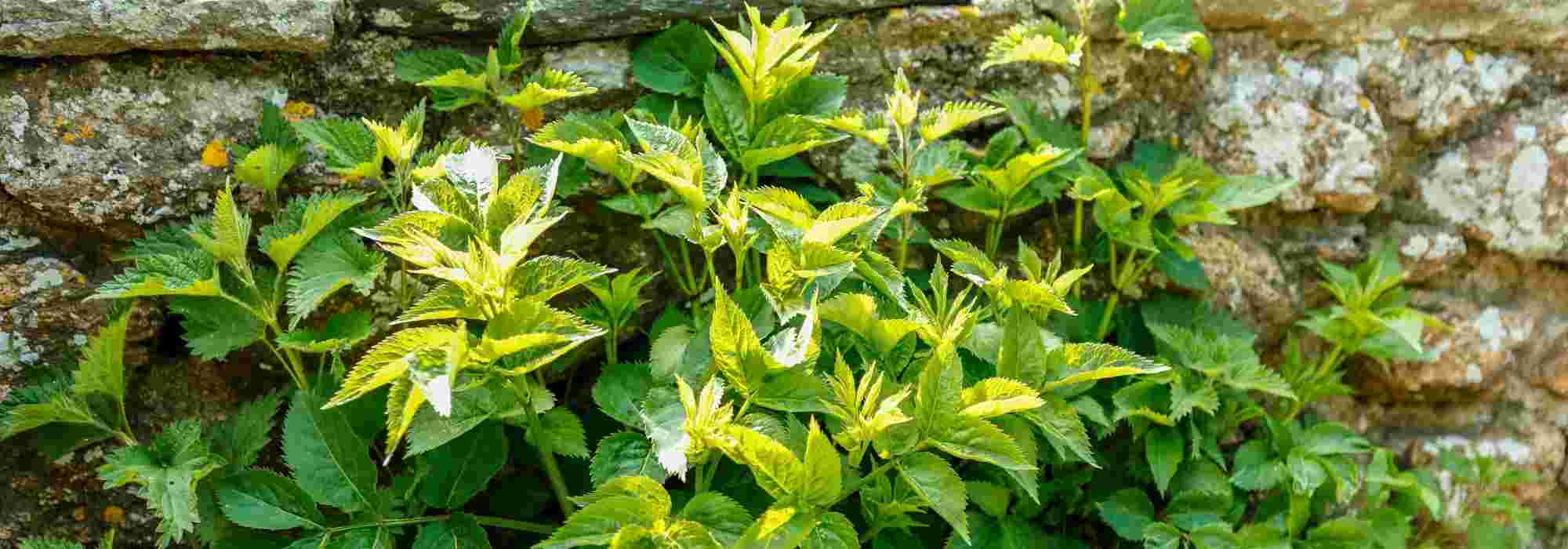
Allergenic or urticating plants
Our tips for "a hypoallergenic garden
Contents
Seasonal hay fever, itchy eyes, scratchy throat, skin reactions — living in the garden can quickly turn into a green hell if you are allergic! The culprits are pollen and sap from certain plants. Beneath their harmless, friendly appearance, some plants can be surprisingly deceptive. Have you ever thought of creating a garden free of irritant or allergenic plants to reduce risk of allergies and skin irritation? A beautiful allergy-free garden is possible — simply choose the right plants and avoid others!
Discover plants to favour and those to avoid to create your hypoallergenic green space!
They grow, we cough!
In spring, nature asserts itself again and, above all… makes itself at home! Spring often goes hand in hand with allergy season and pollen onslaughts. And yet, some pollen (hazel, alder) appears as early as February, others such as grass pollen are mainly present between May and July, others still prevail from mid‑August through September–October. Suffice to say that “green pollution” gives victims little respite. In France, seasonal rhinitis is estimated to affect 30% of the population each year. Hard to enjoy your garden when affected by breathing allergies! Blame anemophilous plants whose pollen, dispersed by wind to enable reproduction, infiltrates airways. This concerns many deciduous trees, meadow plants, certain weeds, and grasses.
But pollination is not the only cause of allergic reactions in the body. Some plants, on contact with skin, prove urticating or photosensitising, causing skin reactions.
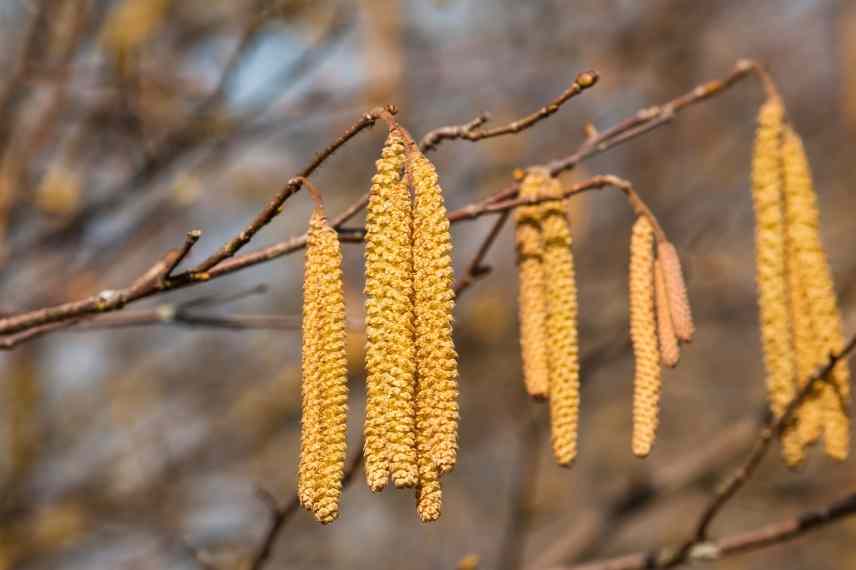
Beautiful but allergenic hazel flowers
Read also
Create a Japanese or Zen gardenWhich plants should be banned?
Unfortunately, they are numerous… Here is a (non-exhaustive) list of plants known for their allergenic potential identified by Réseau National de Surveillance Aérobiologique (RNSA).
Plants causing respiratory allergies
- Trees : birch and other trees of the Betulaceae family such as alder, hazel and hornbeam, cypress, mulberry (Broussonetia papyrifera), plane, lime, willows, chestnut, ash, oak, mimosa, and olive.
- Bushes : Bearing urticating hairs, some are also irritating to breathing passages; examples include Phlomis fruticosa (Jerusalem sage), Viburnum rhytidophyllum and Tetrapanax papyfera, also called rice-paper plant.
- Herbaceous plants, notably wild plants : ragweed, grasses, mugwort, plantain, sorrel, nettle.
- Avoid thuja too!
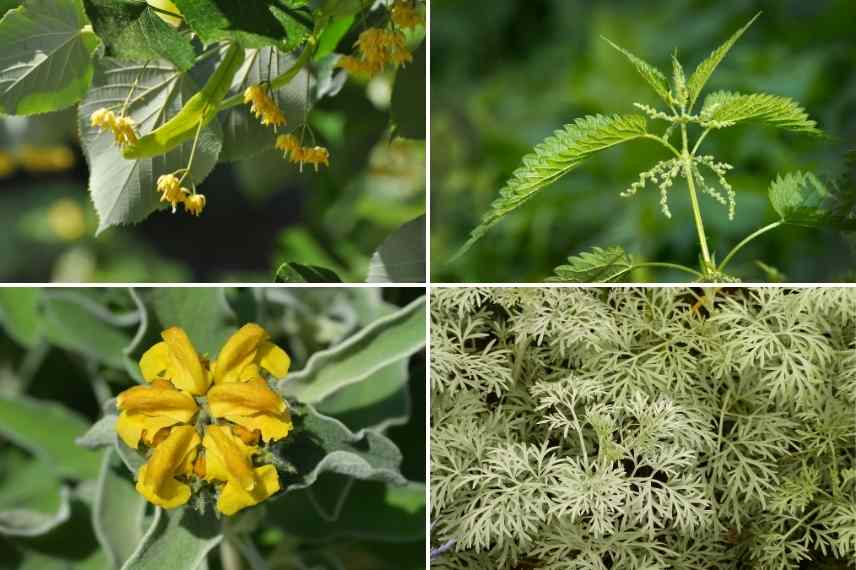
Lime, nettle, Phlomis fruticosa, mugwort
Urticating plants causing skin problems
Some plants irritating via leaves, sap, juice or latex cause skin reactions, notably burns that can be severe in sensitive people. Very often, sun exposure soon after contact worsens symptoms. Top offenders include:
- euphorbias (Euphorbia),
- umbellifers such as cow parsnip or wild angelica (Heracleum maximum) and giant hogweed (Heracleum mantegazzianum),
- stinging parsnip (Pastinaca sativa subsp. urens) — it lives up to its name —
- rue (Ruta graveolens),
- buttercups (Ranunculus repens),
- poison ivy (Toxicodendron radicans),
- fig tree.
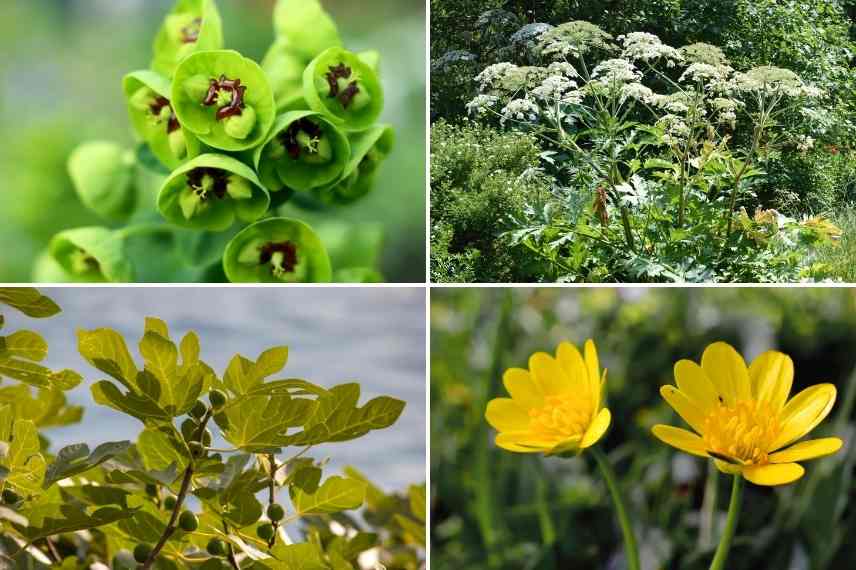
Euphorbia, giant hogweed, fig tree, buttercup
Photosensitising plants
Some plants are best admired with eyes only… This applies to plants rich in photosensitising substances. After contact, under sun exposure they cause dermatitis (notably ‘meadow dermatitis’), characterised by excessive skin pigmentation, often brown spots. Plants involved belong mainly to the Rutaceae and Apiaceae families. Beware of garden rue (Ruta graveolens), carrot tops and fennel.
Virginie’s tip: Wear gloves before gardening and suitable clothing (trousers and long sleeves).
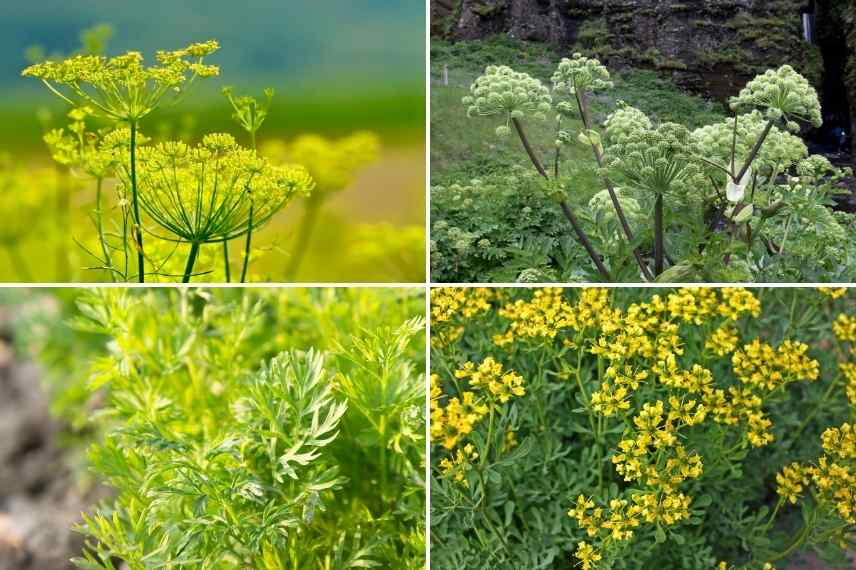
Fennel, angelica, carrot tops and garden rue
How to design an allergy-friendly garden?
Fortunately, there are solutions that allow you to have a beautiful garden despite allergies!
- Avoid at all costs planting plants listed above that trigger allergic reactions
- Avoid anemophilous species pollinated by wind that disperse pollen into the air
- Favour plants pollinated by insects, known as entomophilous, to avoid risk of pollen contacting bronchi
- Maintain your garden; regularly pull up weeds and mow your short grass meadow to prevent grasses from taking over, or replace lawn with mosses or alternative plants to lawn
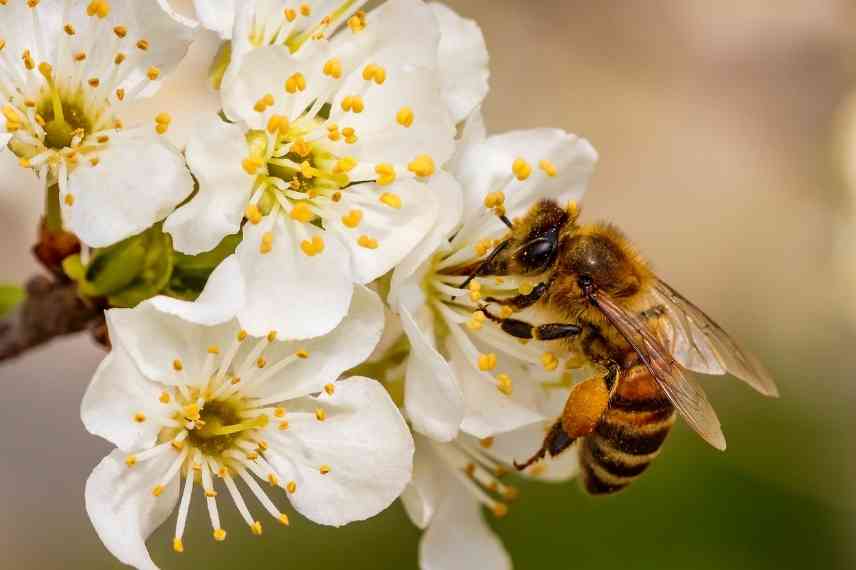
Favour plants pollinated by pollinating insects
What to plant to reduce allergies in the garden?
First step to create an allergen-free garden is to choose plants carefully. Aim: create garden with as little pollen as possible and ban urticating plants.
- Forget avenues of plane trees or hedges of cypress and thuja!
- To add flowers to beds, plant brooms, acacias, snapdragons, foxgloves, delphiniums.
- Opt for a zen, mineral or Japanese garden made of mineral elements (gravel, slate, mineral mulch) and populated with bamboos, cloud‑pruned pines (niwaki), and Ilex crenata.
- Adopt codes of French formal garden and fill yours with evergreen foliage suited to repeated pruning; boxwood (Buxus) clipped to strict shapes, spindle (Euonymus), shrubby honeysuckles (Lonicera nitida, pileata).
- In a Mediterranean garden, dot a rockery with succulents, more or less hardy depending on your climate (sedum, delospermas, agaves, opuntias, joubardes, mangaves) — these do not disperse pollen into the air — and also sages and lavenders.
- Choose ericaceous plants (except heathers), such as azaleas, rhododendrons and camellias; particularly floriferous and an excellent choice.
- In shaded areas of garden, create cool, lush scenes with hostas, ferns, mosses (Sagina subulata, Scleranthus uniflorus) and arums.
- Flower your garden without fear with double‑flowered plants that produce no pollen; roses, geraniums, daffodils and climbers such as honeysuckle, jasmine, Virginia creeper, wisteria which are non-allergenic.
- If you have a water feature, there is no risk either with aquatic plants such as water lilies that carry their pollen via water, nor with marginal aquatic plants; iris, knotweeds, purple loosestrife, Lysimachia, except euphorbias.
- In herb patch, plant mint, lemon balm, thyme, rosemary, parsley, chives, basil or coriander which are non-allergenic.
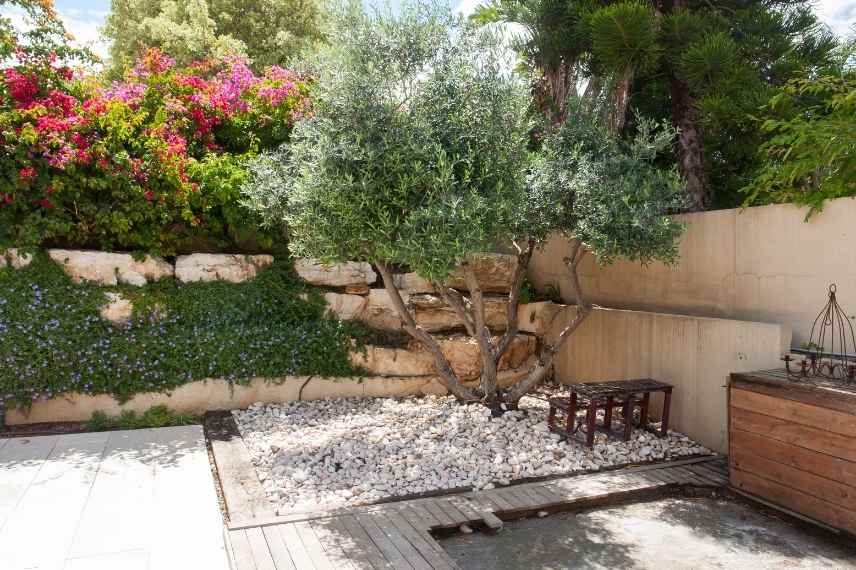
A Mediterranean-style garden… with no allergy worries!
- Subscribe!
- Contents
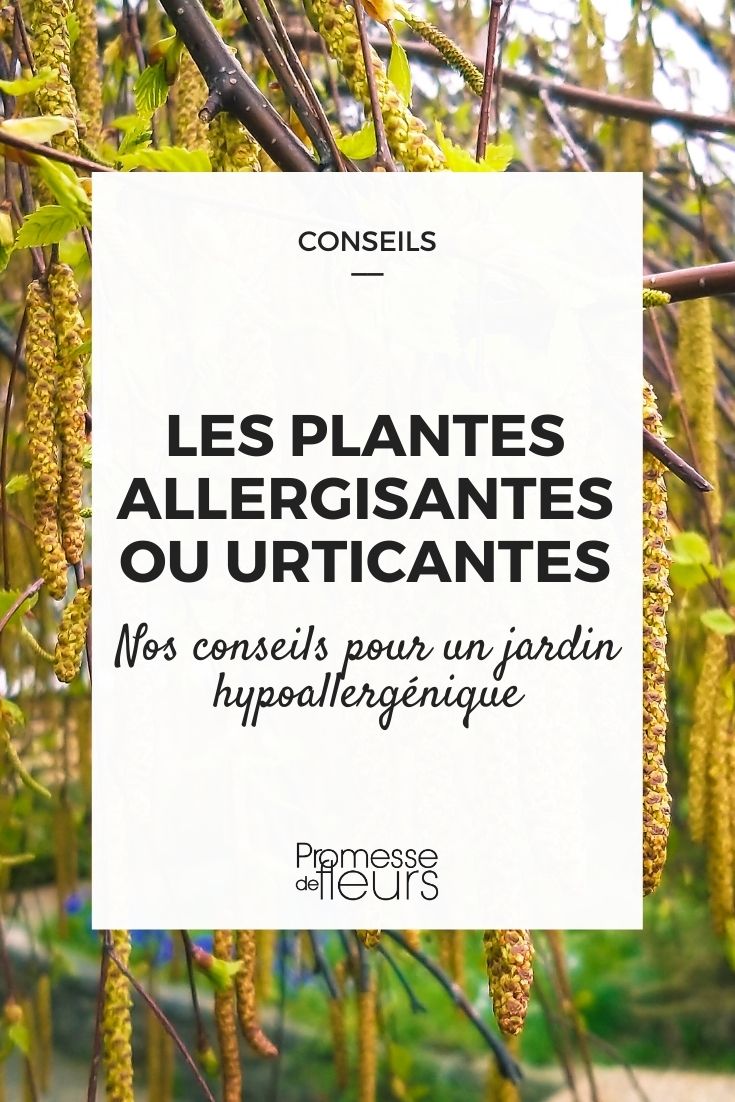































Comments